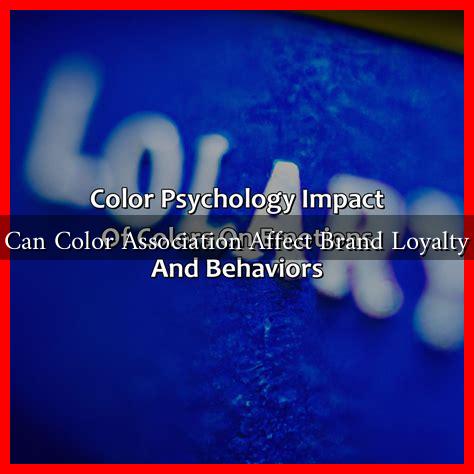-
Table of Contents
Can Color Association Affect Brand Loyalty?
In the world of marketing, color is more than just a visual element; it is a powerful tool that can influence consumer behavior and brand perception. The psychology of color plays a significant role in how consumers associate feelings and emotions with brands, ultimately affecting their loyalty. This article explores the relationship between color association and brand loyalty, backed by research, case studies, and statistics.
The Psychology of Color in Branding
Color psychology is the study of how colors affect human behavior and emotions. Different colors evoke different feelings, which can significantly impact a consumer’s perception of a brand. Here are some common associations:
- Red: Excitement, passion, and energy. Often used by brands like Coca-Cola and Target.
- Blue: Trust, dependability, and calmness. Brands like Facebook and IBM utilize blue to convey reliability.
- Green: Nature, health, and tranquility. Companies like Whole Foods and Starbucks use green to promote sustainability.
- Yellow: Optimism, clarity, and warmth. Brands like McDonald’s and IKEA use yellow to attract attention.
- Purple: Luxury, creativity, and wisdom. Brands like Hallmark and T-Mobile leverage purple to convey premium quality.
Understanding these associations can help brands create a visual identity that resonates with their target audience, fostering a sense of loyalty.
Case Studies: Brands That Successfully Use Color
Several brands have effectively utilized color to enhance their brand loyalty. Here are a few notable examples:
- Coca-Cola: The iconic red and white color scheme is instantly recognizable and evokes feelings of happiness and excitement. Coca-Cola’s consistent use of color has helped it maintain a loyal customer base for over a century.
- Starbucks: The green color of Starbucks represents growth and freshness, aligning with its brand message of sustainability. This color choice has contributed to a strong emotional connection with its customers, fostering loyalty.
- Apple: The minimalist design and use of white and silver convey sophistication and innovation. Apple’s color choices have helped create a loyal following among tech enthusiasts who associate the brand with quality and cutting-edge technology.
Statistics on Color and Brand Loyalty
Research supports the idea that color can significantly impact brand loyalty. According to a study by the Institute for Color Research, people make a subconscious judgment about a product within 90 seconds of initial viewing, and between 62% to 90% of that assessment is based on color alone. Additionally, a survey by the branding agency, Kissmetrics, found that:
- 85% of consumers make purchasing decisions based on color.
- Color increases brand recognition by up to 80%.
- Consumers are more likely to remain loyal to brands that use colors they find appealing.
These statistics highlight the importance of color in shaping consumer perceptions and fostering brand loyalty.
Challenges and Considerations
While color can enhance brand loyalty, it is essential to consider cultural differences and personal preferences. Colors can have different meanings in various cultures, which can affect how a brand is perceived globally. For instance:
- In Western cultures, white is often associated with purity and weddings, while in some Eastern cultures, it symbolizes mourning.
- Red is considered lucky in China, but in South Africa, it is associated with mourning.
Brands must conduct thorough research to understand their target audience’s cultural context and preferences to avoid misinterpretation.
Conclusion
Color association plays a crucial role in shaping consumer perceptions and influencing brand loyalty. By understanding the psychology of color and its impact on emotions, brands can create a visual identity that resonates with their audience. Successful brands like Coca-Cola, Starbucks, and Apple demonstrate the power of color in fostering loyalty. However, it is essential to consider cultural differences and personal preferences when selecting colors for branding. Ultimately, a well-thought-out color strategy can lead to increased brand recognition, customer loyalty, and long-term success.
For further reading on the psychology of color in marketing, you can explore resources like Color Psychology.

